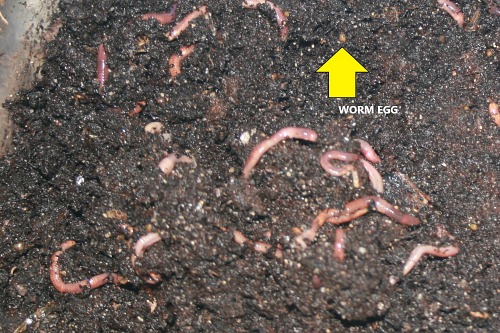Enjoy Healthy, Thriving Grass with the Help of Red Wiggler Express Lawn Care Tips
Enjoy Healthy, Thriving Grass with the Help of Red Wiggler Express Lawn Care Tips
Blog Article
Red Wigglers: The Unsung Heroes of Organic Waste Recycling
Red wigglers, or Eisenia fetida, offer as important agents in the natural waste recycling procedure, transforming discarded products into valuable vermicompost. As the globe significantly looks for services to fight waste build-up and boost agricultural efficiency, recognizing the role of these worms ends up being vital.
What Are Red Wigglers?
The exceptional strength of red wigglers, medically understood as Eisenia fetida, emphasizes their crucial function in natural waste recycling. These small, reddish-brown earthworms are normally located in decomposing natural matter, such as compost heap and manure lots. Lake Hickory Bait. Unlike other earthworm types, red wigglers flourish in nutrient-rich atmospheres and are highly reliable at breaking down organic materials, making them vital for vermicomposting

(Red Wiggler Express)Along with their duty in waste reduction, red wigglers add to soil health and wellness by enhancing dirt framework and aeration with their burrowing tasks (Lake Hickory Bait). Their existence in composting systems not just improves decay rates but also promotes a sustainable strategy to lose administration, illustrating their importance in eco-friendly preservation efforts
Advantages of Composting With Worms
Composting with worms, especially red wigglers, offers countless benefits that enhance both waste administration and dirt health and wellness. Initially, these worms successfully break down organic waste, transforming it into nutrient-rich vermicompost that enhances dirt. This procedure increases decomposition, permitting a quicker recycling of kitchen area scraps and other organic materials contrasted to traditional composting approaches.
Additionally, the vermicompost produced by red wigglers is including helpful microorganisms, which assist improve dirt framework, oygenation, and wetness retention. This boosts the total health of plants, advertising strenuous development and increased returns in gardens and farming setups. The use of worms in composting reduces the production of greenhouse gases, such as methane, adding to a more sustainable waste management system.

Just How to Start Vermicomposting
Developing a vermicomposting system is a simple procedure that can produce substantial advantages for both waste management and dirt enrichment. To begin, choose a suitable container, such as a plastic bin or wood box, with sufficient air flow openings to guarantee proper air movement. The measurements should preferably be about 2 feet by 3 feet, enabling enough room for the worms to prosper.
Following, prepare bed linen product, which can consist of shredded paper, cardboard, or coconut coir. This bed linen needs to be dampened to create an appropriate habitat for the worms. When the bed linens remains in area, introduce red wigglers (Eisenia fetida) into the bin, usually around one pound of worms for each square foot of area.
Complying with the placement of worms, add organic waste, such as vegetables and fruit scraps, coffee premises, and crushed eggshells. Avoid adding milk, meat, or oils, as these can develop smells and attract bugs. Ultimately, position the container in a shaded, temperature-controlled location to preserve optimal problems for worm activity. With these steps, you will successfully start a vermicomposting system that contributes to lasting waste management and enriches your soil.
Keeping a Healthy Worm Container
(Red Wiggler Express)Keeping a worm container flourishing requires regular attention and like guarantee the health and wellness of the red wigglers and the performance why not try this out of the composting process. Proper maintenance starts with monitoring the wetness levels; the container must perspire however not saturated. A good general rule is to preserve an uniformity similar to a wrung-out sponge.
Aeration is vital. Gently mixing the bed linen and food scraps every few weeks avoids compaction and makes certain that all worms have accessibility to oxygen. Additionally, it is necessary to feed the worms properly. A well balanced diet of fruit and vegetable scraps, coffee premises, and crushed eggshells must be offered in moderation to avoid overfeeding, which can cause odors and pests.
Temperature policy is an additional vital facet. Red wigglers prosper in a variety of 55 to 77 degrees Fahrenheit. If the bin comes to be too warm or cool, the worms might come to be stressed - Lake Hickory Bait. Finally, occasionally inspect for signs of health, such as worm population development and the presence of healthy and balanced spreadings. By vigilantly taking care of these variables, one can preserve a durable and productive worm bin.
Influence On Sustainable Living
The effective maintenance of a worm container not only benefits the health and wellness of red wigglers however additionally adds dramatically to sustainable living practices. By reusing organic waste, such as kitchen area scraps and yard debris, red wigglers assist divert substantial amounts of product from garbage dumps. This decrease in waste not just reduces greenhouse gas emissions however also minimizes the environmental concern linked with waste management.
Additionally, the castings generated by red wigglers serve as a nutrient-rich organic fertilizer, improving dirt health and advertising plant growth. This natural choice to chemical fertilizers sustains sustainable farming and horticulture methods, minimizing dependence on synthetic inputs that can damage ecosystems. In addition, worm composting cultivates understanding of waste management, encouraging individuals and areas to adopt even more lasting practices.

Verdict
In summary, red wigglers offer as crucial contributors to natural waste reusing with their reliable decay of natural products. By incorporating vermicomposting right into waste management techniques, individuals and neighborhoods can substantially minimize waste while advertising environmental sustainability.
Report this page